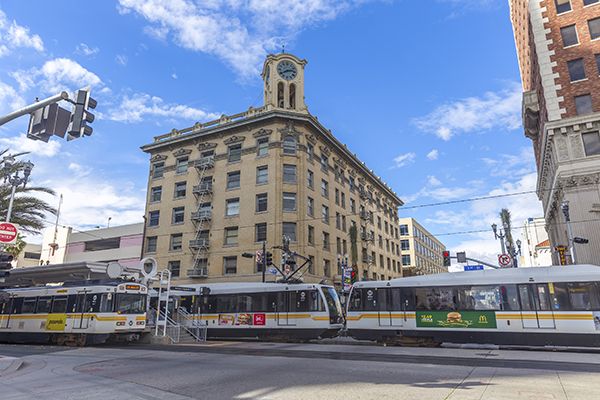California is currently exploring opportunities to take the state's current passenger rail system to a level where passenger rail and connecting modes act as an integrated system with seamless door-to-door travel.
Passenger rail and connecting transit systems serving specific local or regional markets have typically evolved over decades. Especially in California, geographic and topographic constraints are major factors impacting the development of rail infrastructure and services, leaving little room for expanding local passenger rail systems to a statewide level.
Things are about to change drastically with the implementation of high-speed rail (HSR) infrastructure and high-speed services, allowing for convenient rail travel across the state. This, consequently, invites a comprehensive statewide view of passenger rail travel, to make all the different services come together and perform as a successful system.
HSR will enable all regions in California to benefit from competitive rail travel times, minimized transfer times and integrated service plans and schedules for local, regional and statewide services. This system will be based on a statewide pulsed service system and optimized transfers with minimal transfer times at key hub locations. The state’s focus is to coordinate planning for such a pulse system framework. The local and regional rail and public transportation service providers will organize planning and operations accordingly, and implement the system.
This approach was pioneered in Switzerland and has been adapted across Europe to become a proven way of dramatically improving rail travel while increasing ridership and revenue.
What are other components of integration?
Service plan coordination and integration is just one component. In order to maximize user benefits, the integration will have to expand beyond schedules and day-to-day operations.
An integrated approach to marketing, customer information, trip planners, ticketing and fares are steps to improve customer experience.
The rail and transit service providers will be selling the product “rail and transit travel” statewide, not just in their own service area, and customers should not have to worry how different portions of this product fit together.
As with an online purchase, where the logistics behind the online storefront remain hidden, public transportation needs to have an integrated marketing and sales platform to allow for a convenient customer experience and to "make the sale". The state can be the facilitator to get all parties to the table to initiate and coordinate the various efforts, some of which have already started to evolve.
Where could integration go next?
Steer Davies Gleave led a comprehensive review of passenger rail infrastructure in California that became the basis of the planning efforts for the 2018 State Rail Plan, and is also part of the development team. The plan will lay the groundwork for long-term coordination between all the players in the state.
Nonetheless, some agencies have already made initial steps to schedule integration, and pilot programs for integrated ticketing and traveller information are being initiated or developed. The lowest hanging fruit is in traveller information, which not only requires rather low investment but also lowers the bar for travellers to access the public transit and rail system.
In the longer term, once the rail system is fully integrated and can provide travelers in all regions with the benefit of future HSR services, passenger rail will become the preferred travel option across California.
Written by Stefan Reul.
Read more about our review of California's passenger rail.
